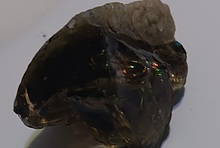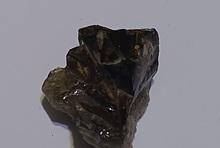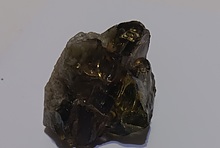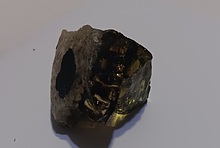Home PageAbout MindatThe Mindat ManualHistory of MindatCopyright StatusWho We AreContact UsAdvertise on Mindat
Donate to MindatCorporate SponsorshipSponsor a PageSponsored PagesMindat AdvertisersAdvertise on Mindat
Learning CenterWhat is a mineral?The most common minerals on earthInformation for EducatorsMindat ArticlesThe ElementsThe Rock H. Currier Digital LibraryGeologic Time
Minerals by PropertiesMinerals by ChemistryAdvanced Locality SearchRandom MineralRandom LocalitySearch by minIDLocalities Near MeSearch ArticlesSearch GlossaryMore Search Options
The Mindat ManualAdd a New PhotoRate PhotosLocality Edit ReportCoordinate Completion ReportAdd Glossary Item
Mining CompaniesStatisticsUsersMineral MuseumsClubs & OrganizationsMineral Shows & EventsThe Mindat DirectoryDevice SettingsThe Mineral Quiz
Photo SearchPhoto GalleriesSearch by ColorNew Photos TodayNew Photos YesterdayMembers' Photo GalleriesPast Photo of the Day GalleryPhotography
╳Discussions
💬 Home🔎 Search📅 LatestGroups
EducationOpen discussion area.Fakes & FraudsOpen discussion area.Field CollectingOpen discussion area.FossilsOpen discussion area.Gems and GemologyOpen discussion area.GeneralOpen discussion area.How to ContributeOpen discussion area.Identity HelpOpen discussion area.Improving Mindat.orgOpen discussion area.LocalitiesOpen discussion area.Lost and Stolen SpecimensOpen discussion area.MarketplaceOpen discussion area.MeteoritesOpen discussion area.Mindat ProductsOpen discussion area.Mineral ExchangesOpen discussion area.Mineral PhotographyOpen discussion area.Mineral ShowsOpen discussion area.Mineralogical ClassificationOpen discussion area.Mineralogy CourseOpen discussion area.MineralsOpen discussion area.Minerals and MuseumsOpen discussion area.PhotosOpen discussion area.Techniques for CollectorsOpen discussion area.The Rock H. Currier Digital LibraryOpen discussion area.UV MineralsOpen discussion area.Recent Images in Discussions
Improving Mindat.orgProblems with search by elements
19th Nov 2014 18:01 UTCReiner Mielke Expert
19th Nov 2014 18:19 UTCUwe Kolitsch Manager
19th Nov 2014 18:28 UTCReiner Mielke Expert

19th Nov 2014 18:32 UTCTom Tucker
19th Nov 2014 18:37 UTCReiner Mielke Expert
Yes, but like I said, Sakuraiite is not one of them.

19th Nov 2014 18:40 UTCTom Tucker
19th Nov 2014 20:23 UTCReiner Mielke Expert

19th Nov 2014 21:07 UTCTom Tucker
19th Nov 2014 21:10 UTCReiner Mielke Expert
19th Nov 2014 23:39 UTCRob Woodside 🌟 Manager

20th Nov 2014 00:11 UTCAlfredo Petrov Manager
20th Nov 2014 09:19 UTCUwe Kolitsch Manager
No! (And on what basis do you think they are "not essential"??) Pure sphalerite-type or -based CuS does not exist - the mineral needs the Zn/Fe/In/Sn to become stable. Pure CuS would be simply covellite! Please read http://rruff.info/rruff_1.0/uploads/CM24_679.pdf.
There are numerous examples of minerals which need certain minor elements to become stable.
Formula changed back to (Cu,Zn,Fe,In,Sn)S - which is the formula in the IMA list.
20th Nov 2014 14:25 UTCReiner Mielke Expert
20th Nov 2014 14:33 UTCUwe Kolitsch Manager
You have to check the published data for each mineral.
20th Nov 2014 14:36 UTCReiner Mielke Expert

20th Nov 2014 14:38 UTCTom Tucker
Sakuraiite (Cu,Zn,Fe)3(In,Sn)S4 A 1965-017 Japan Chigaku Kenkyu (Earth Science Studies), Sakurai volume (1965), 1 Canadian Mineralogist 24 (1986), 405
off of this Sept, 2014 list of IMA approved minerals:
http://pubsites.uws.edu.au/ima-cnmnc/IMA_Master_List_(2014-09).pdf

20th Nov 2014 14:41 UTCAlfredo Petrov Manager
20th Nov 2014 14:50 UTCPeter Haas
20th Nov 2014 14:53 UTCReiner Mielke Expert
and as far as I know this has not been resolved. It would be useful if Mindat had a note to that effect.

20th Nov 2014 15:00 UTCAlfredo Petrov Manager
20th Nov 2014 15:27 UTCUwe Kolitsch Manager
Re-changed and comment added.
Reiner: “this implies that all others are not essential”
No, it does not - you only have the wrong impression it does.
Reiner: “useful if Mindat had a note to that effect.” Comment added.
Personally, I’d rather trust a study which uses both chemical-analytical and X-ray diffraction data (i.e., Kissin & Owens, 1986) than one that uses only chemical-analytical data (Shimizu et al., 1986, published a little bit earlier).
Alfredo: Ishiharaite has an F-centred cubic cell, whereas sakuraiite has a primitive cubic cell.
20th Nov 2014 15:48 UTCReiner Mielke Expert
"Reiner: “this implies that all others are not essential”
No, it does not - you only have the wrong impression it does. "
If only Cu and S are listed as essential, but are not the only essential elements, then the list is incomplete. Would it not be a good idea to list all the essential elements and not just some of them otherwise having such a list would be redundant ?
20th Nov 2014 15:57 UTCUwe Kolitsch Manager
If I search for a mineral species that would fit a certain chemical analysis, I use both the "only element(s), X, Y, ..." option and the "elements X, Y, ... (and any others allowed)". Although the latter might result in several pages of possible minerals, they are checked much quicker than thought, and often yield the correct result.
20th Nov 2014 16:15 UTCReiner Mielke Expert
20th Nov 2014 17:20 UTCUwe Kolitsch Manager
- limit to a certain no. of elements (e.g. min. 3, max. 5 - very handy)
- search among groups of elements (e.g., (any) lanthanide or any alkali element)
- include elements which may be present, but don't have to be
- ... (can't check at the moment)
Don't know how difficult to program such options would be.

21st Nov 2014 08:42 UTCAlfredo Petrov Manager
Uwe, what's the correct space group for sakuraiite? We should add it to the sakuraiite page.

21st Nov 2014 13:06 UTCFrank Keutsch Expert
I think questions remain about sakuraiite...
Frank
21st Nov 2014 14:40 UTCReiner Mielke Expert
21st Nov 2014 19:02 UTCUwe Kolitsch Manager
It's not known (see the link to the mentioned paper).




Mindat.org is an outreach project of the Hudson Institute of Mineralogy, a 501(c)(3) not-for-profit organization.
Copyright © mindat.org and the Hudson Institute of Mineralogy 1993-2024, except where stated. Most political location boundaries are © OpenStreetMap contributors. Mindat.org relies on the contributions of thousands of members and supporters. Founded in 2000 by Jolyon Ralph.
Privacy Policy - Terms & Conditions - Contact Us / DMCA issues - Report a bug/vulnerability Current server date and time: April 19, 2024 09:32:54
Copyright © mindat.org and the Hudson Institute of Mineralogy 1993-2024, except where stated. Most political location boundaries are © OpenStreetMap contributors. Mindat.org relies on the contributions of thousands of members and supporters. Founded in 2000 by Jolyon Ralph.
Privacy Policy - Terms & Conditions - Contact Us / DMCA issues - Report a bug/vulnerability Current server date and time: April 19, 2024 09:32:54














